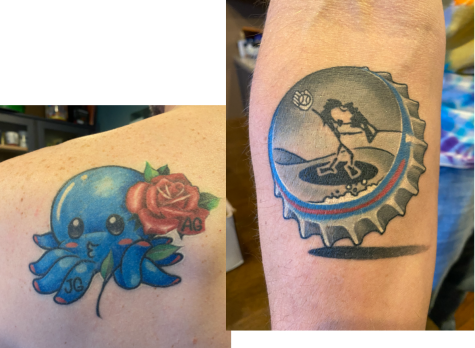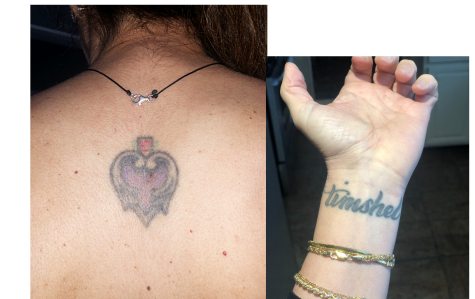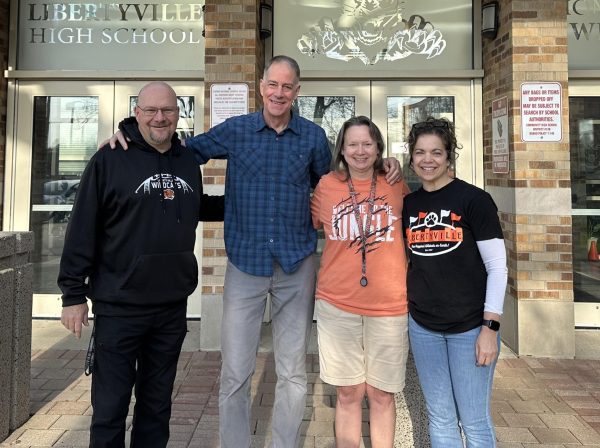Tattooed and Tabooed: Delving into Today’s Tattoo Stigma
Tattoos have come a long way in American culture. They have evolved from a symbol of rebellion to a widely accepted form of self-expression. However, veiled behind this progress, the societal stigma surrounding tattoos in the United States still remains prominent today. To many, a stain on a body is also seen as a stain on one’s character.
History of Tattoos in America
As stated by PBS, Europeans were first exposed to tattoos in the Polynesian islands. European missionaries largely condemned these tattoos and viewed them as signs of primitiveness. Despite this, tattoos, brought home by sailors, started to gain popularity on the fringes of Western society.

During the late 1800s tattoo clients were primarily sailors and soldiers. Tattoos didn’t reach rural America through circuses until the early 1900s. These circuses featured tattooed individuals-, so-called “freaks,” and as a result, tattoos became associated with outcasts of society, according to HuffPost.
The countercultural movement in the ‘70s, as well as the punk and rock and roll movements in the ‘80s led to an explosion of tattoo popularity in mainstream culture. With this, tattoos morphed into representations of rebellion and edginess. HuffPost reports that the ‘90s and 2000s saw tattoos being sported by celebrities as well as becoming increasingly popular in the general public.
Today, according to a Statistica study, as many as 145 million Americans have a tattoo; that represents more than 40% of the country’s population.
Professedly, it seems that since tattoos have become more popular, the stigma has also faded away in recent years. However, the stigma has surfaced in other ways, especially in the workplace.
Internalized Tattoo Stigma
A 2017 study done by researchers Kristin Broussard and Helen Harton from the University of Northern Iowa revealed that tattooed people are, in fact, viewed as less favorable than those without tattoos. They asked half of the participants to rate images of tattooed people and the other half to rate the same images of people with their tattoos digitally removed; the ratings were based on various categories, such as intelligence, drinking behavior, character and personality traits.
Not only were people more approving of non-tattooed people than tattooed people, but participants in the study with tattoos themselves also held equally unfavorable views of tattooed individuals. In an interview with the BBC, Broussard explained that people with tattoos themselves are just as susceptible to negative stereotypes associated with tattoos as those without tattoos.
“People tend to internalize stigma,” Broussard explained. “It doesn’t really matter if you have that identity or you have that characteristic like owning a tattoo. If there’s a very strong societal stigma against it, you will internalize it and still believe it.”
Jeremy Gerlach, a graphics and woodworking teacher, has two tattoos. One, on his forearm, is a bottle cap with Pearl Jam’s logo, drawn by his daughter, representing a woodworking project he worked on with his daughter. The other, on his shoulder, is an octopus and rose symbolizing his son and daughter. Mr. Gerlach’s awareness of the stigma surrounding visible tattoos resulted in his waiting to get his tattoos until recently.
“I like the fact that this one’s on my [fore]arm and I can see it and I can actually enjoy it, but it does sometimes still freak me out that it’s there,” he remarked. “ I’ve never been ‘that’ person to really have this permanent thing on my body, so it did take me a little bit of convincing and pushing.”

Photos provided by Jeremy Gerlach (Peyton Rodriguez)
Tattoos in the Workplace
Today, it’s still legal for corporations in the United States to have “no tattoo” policies. Although employers cannot discriminate based on race, age and gender, they are still allowed to have strict policies on appearance. For instance, most commercial airlines forbid any visible tattoos, and the U.S Army has strict regulations on what is acceptable.
Johnny C. Taylor Jr., president and CEO at the U.S.-based Society for Human Resource Management, in an interview with BBC, touched on the stark contrast between the acceptance of visible tattoos and hidden tattoos in the workplace.
“In terms of most acceptable to least acceptable, if you can hide it, it’s OK,” Taylor Jr. stated. “Then there’s the employers who say you can have a tattoo, but it shouldn’t be a distraction… Lastly, there’s the category of just not acceptable, and that typically means when tattoos show up on your face and it’s something that no one can avoid looking at, [or] when the nature [of the tattoo] is truly controversial.”
Dyan Naslund, a world literature and American literature teacher, is a proud owner of two tattoos. She has a purple heart on her back and the word “timshel” on her wrist. She said the purple heart is a tribute to her father, as well as a reminder for her to keep on moving on, and to grow from the past. The word “timshel” represents free will, and the consequences that come from choices. Despite her appreciation for tattoos and body art, Ms. Naslund also expressed her hesitance towards getting a larger, more visible tattoo despite LHS’s general acceptance of tattooed individuals.
“Even though I think it would be super cooI [to get a larger tattoo], I would worry a little bit about people feeling like that teacher is a little bit too edgy or she’s too far out there,” she articulated.

Photos provided by Dyan Naslund (Peyton Rodriguez)
Tattoos in Everyday Life
Even outside of the workplace, evidence of discrimination due to visible tattoos is apparent. Although tattoos are said to be generally accepted, people with visible body art still experience their fair share of prejudice.
According to Workopolis, a job search website, a survey in 2014 of 5,000 people found that 51% of the participants considered tattooed people to lack seriousness.
Ms. Naslund recounted a specific instance while shopping with her brother, who has a full sleeve of tattoos, meaning his entire arm is covered with tattoos. He was wearing a tank top, so his sleeve was visible.
“He tried to return something, and [the cashiers] said he couldn’t return it, and they were rude to him,” she detailed. “So I went into the store with the exact same thing, and I was able to return it. No problem. And so I know people totally judge him based on his whole sleeve of tattoo. He looks kind of rough.”
As Time Goes On
A Salary.com survey revealed that 88% of 18-25 year olds are tolerant of tattoos in the workplace, while only 37% of those 60 and older felt that visible tattoos were acceptable.
Younger generations continue to accept and diminish the tattoo stigma, and the true embrace of body art may be within reach.
But, ultimately, in many ways, people with body art get to decide what having a tattoo means.
“It’s the stigma that a tattoo is trashy. People have that view of tattoos, and they’ll judge me just because I have a tattoo on my arm,” Mr. Gerlach said. “But I’m super happy with the choice that I made; it makes me feel good. My tattoos represent all the things I love and enjoy. That’s more than enough for me.”






